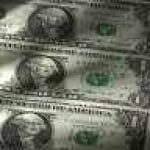The Degrading Facts of a Fake Money Hole in the Head
Squishy Fact Finding Mission
Today we begin with the facts. But not just the facts; the facts of the facts. We want to better understand just what it is that is provoking today’s ludicrous world. To clarify, we are not after the cold hard facts; those with no opinions, like the commutative property of addition. Rather, we are after the warm squishy facts; the type of facts that depend on what the meaning of ‘is’ is.
 Fact-related pleas… [PT]
Fact-related pleas… [PT]
The facts, as far as we can tell, are that we are presently living in a land of extreme confusion. The genesis of this extreme confusion is today’s fake money system. And the destructive effects of this fake money system have spread out like a virus into nearly all aspects of daily life.
Plain and simple, central bank fiat money creation, multiplied by commercial banks through fractional-reserve banking, propagates financial and economic chaos. The experience of long periods of money supply expansion punctuated by abrupt, episodic contractions, has the effect of whipsawing the working stiff’s efforts to get ahead. This trifecta of offenses has debased the rewards of hard work, saving money, and paying one’s way.
Quite frankly, these facts are insulting. In particular, they are insulting for those running in the rat race for their family’s daily bread. These facts are also insulting for retirees, who worked for four decades only to have their life savings extracted by the depredations of the fake money system.
 Early rat race conditioning [PT]
Early rat race conditioning [PT]
Short-Sighted Decisions
The facts are that on August 15, 1971, Tricky Dick Nixon stiffed the world unconditionally. He defaulted on the Bretton Woods system, and terminated the agreement that allowed member nations to redeem their paper dollars, acquired through trade, for gold. But that’s not the half of it…
…click on the above link to read the rest of the article…



 Watch for those pitchfork bearers – they can get real nasty and then heads often roll quite literally. [PT]
Watch for those pitchfork bearers – they can get real nasty and then heads often roll quite literally. [PT] Good old Friedrich A. Hayek – depicted above – once coined the term “scientism” to describe the futile attempts of assorted social engineers and their academic advisors to express human action in the form of barren mathematical equations and statistics. Lettuce look at something one of his followers, the late Professor Austin L. Hughes, wrote in an article published in the autumn 2012 issue of “The New Atlantis” journal:
Good old Friedrich A. Hayek – depicted above – once coined the term “scientism” to describe the futile attempts of assorted social engineers and their academic advisors to express human action in the form of barren mathematical equations and statistics. Lettuce look at something one of his followers, the late Professor Austin L. Hughes, wrote in an article published in the autumn 2012 issue of “The New Atlantis” journal:  Let us not forget about this important skill… [PT]
Let us not forget about this important skill… [PT]

 Normally, judgment would be passed on a Thursday, but we are making an exception. [PT]
Normally, judgment would be passed on a Thursday, but we are making an exception. [PT]


 Master of the Mint and economy wizard Steven Mnuchin and his wife at the annual ritual greenback burning festival. [PT]
Master of the Mint and economy wizard Steven Mnuchin and his wife at the annual ritual greenback burning festival. [PT]




 How new years generally work… [PT]
How new years generally work… [PT] The short and sweet definition of democratic elections by eminent American wordsmith and political philosopher H.L. Mencken [PT]
The short and sweet definition of democratic elections by eminent American wordsmith and political philosopher H.L. Mencken [PT] When the government cuts back… [PT]
When the government cuts back… [PT]

